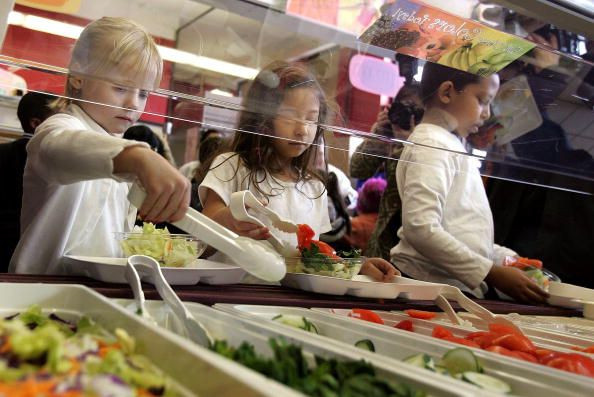Michelle Obama's 2012 Federal Lunch Guidelines Are Already Improving School Meals: Study

Back in 2012, the federal guidelines for school lunches were changed in a push to reduce childhood obesity in school-aged kids and build a healthier generation of Americans. A recent study published in the American Journal of Agricultural Economics revealed that these programs are doing at least some of what they intended.
Researchers found that, under the new guidelines, student lunches had 4 percent fewer calories. Meanwhile, calories from fat decreased by an overall 18 percent, while those from sodium fell by 8 percent, according to a news release. First Lady Michelle Obama was behind the push for new federal guidelines that overhauled the student lunch program, and has been behind more recent changes such as banning schools from serving soda, the Washington Post reported.
To reach these conclusions about the the nutritional content of meals under the National School Lunch Program, lunch sales data from the registers were analyzed alongside numbers about student absences. Researchers considered the NSLP’s entrées chosen by students across different socioeconomic and demographic groups and how the choices affected their health.
The current federal school lunch program nutrition standards require greater availability of fruits, vegetables, whole grains and fat-free or low-fat milk. Additionally, meals were reduced in saturated fats and sodium.
"The students more likely to participate in free and reduced-price lunch programs are among the same populations most likely to suffer from obesity and related health risks," said lead author Janet Peckham at the U.S. Food and Drug Administration, according to Georgia State University. "Our goal was to identify any systematic differences in their lunch choices versus those paying the full price to see how well the school lunch program was meeting its goals of providing food assistance to undernourished children and combating the rising rates of childhood obesity."
Nearly 32 million students are served more than five billion lunches in a school day, the release noted.
Source: Mroz T, Kropp J, Peckham J, Granberg E, Haley-Zitlin V. Socioeconomic and Demographic Determinants of the Nutritional Content of National School Lunch Program Entrée Selections. American Journal of Agricultural Economics. 2016.
Read more:
School Lunches Prepared By Chefs Improve Healthy Eating: The Challenges Of Cafeteria Revolution
Published by Medicaldaily.com



























